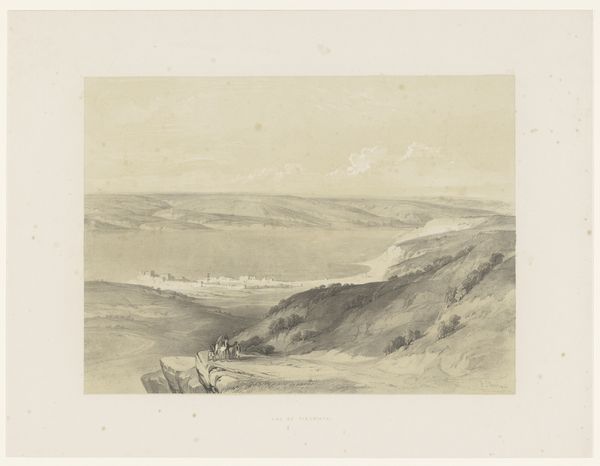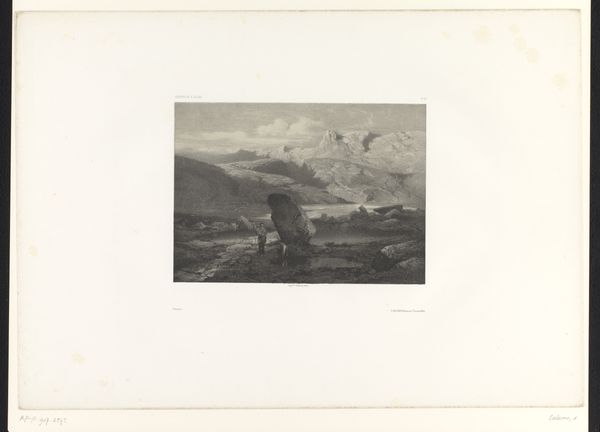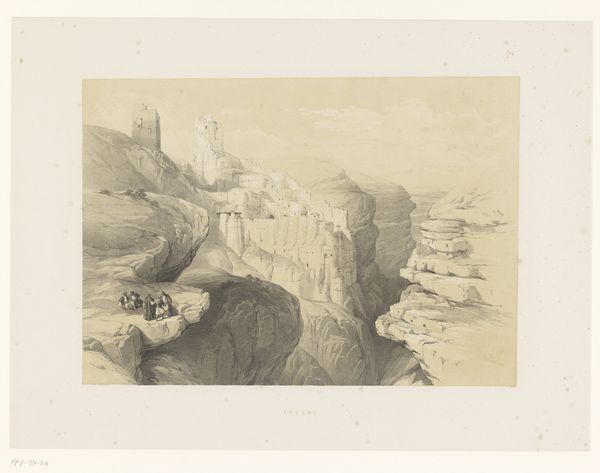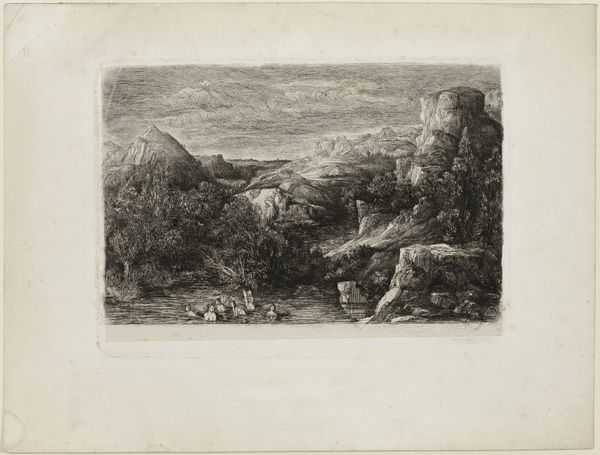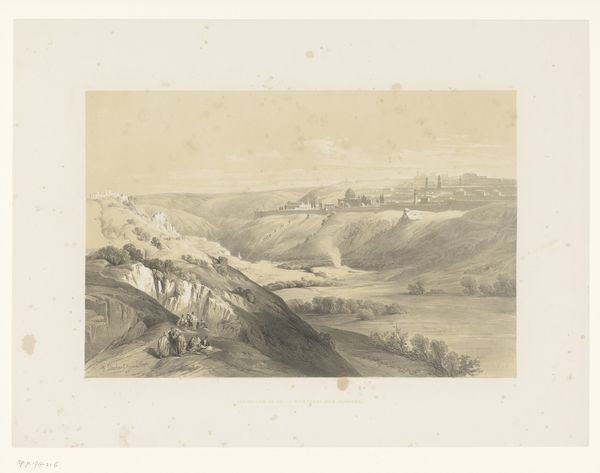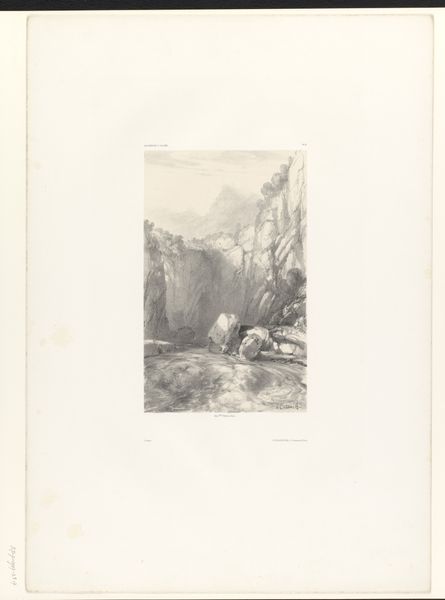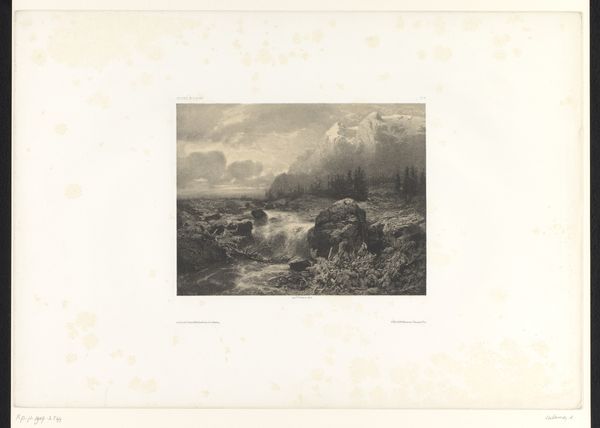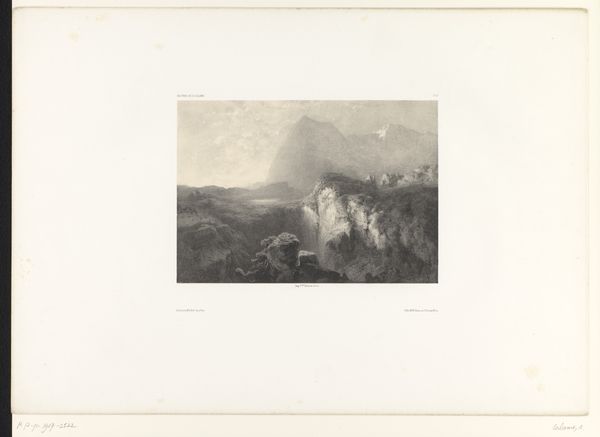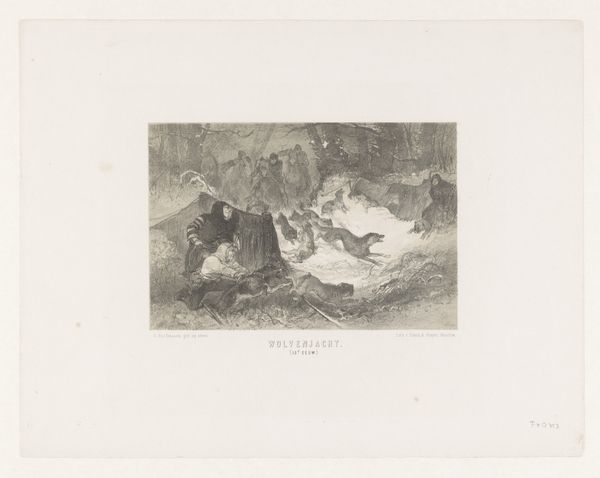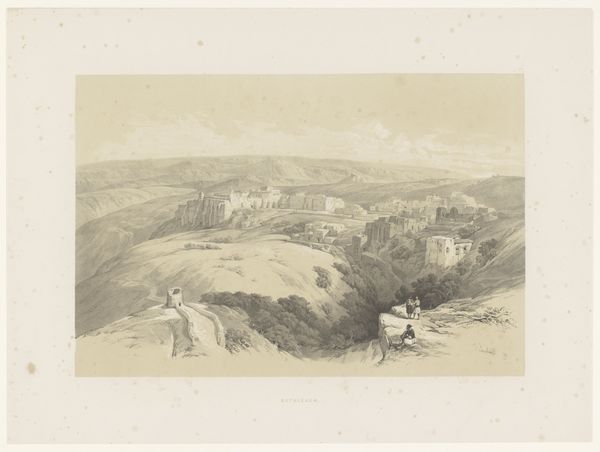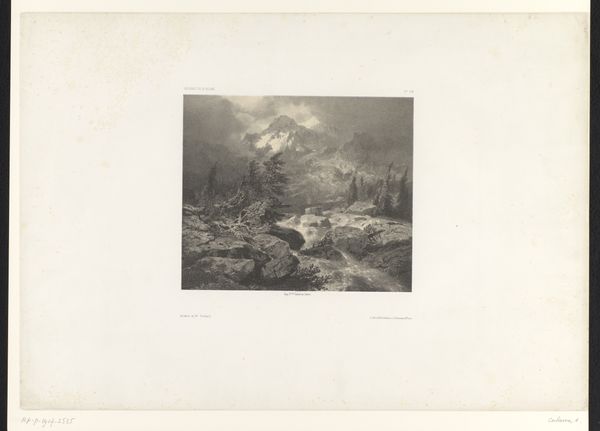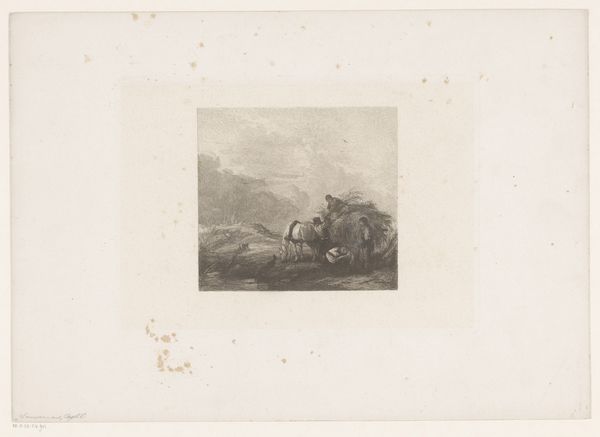
Dimensions: height 394 mm, width 530 mm
Copyright: Rijks Museum: Open Domain
François Stroobant rendered this mountain landscape with a view of Cana in graphite and possibly charcoal. It depicts travellers in a barren landscape, highlighting a theme popular in 19th century European art: orientalism. During this time, the Near East became a site of European fascination, influenced by colonial expansion, biblical narratives, and a romanticized vision of distant lands. The image presents a panoramic view, emphasizing the vastness of the landscape and the smallness of the figures. The composition invites viewers to contemplate the relationship between humanity and nature, and the cultural exchange between East and West. This artwork likely reflects the growing interest in biblical archaeology and the desire to experience the Holy Land through art. Studying travelogues, photographs, and other visual materials from the period could shed light on the artist's intentions and the cultural context in which the work was created. By exploring these historical and institutional factors, we can gain a deeper appreciation for the complex meanings embedded within the artwork.
Comments
No comments
Be the first to comment and join the conversation on the ultimate creative platform.
